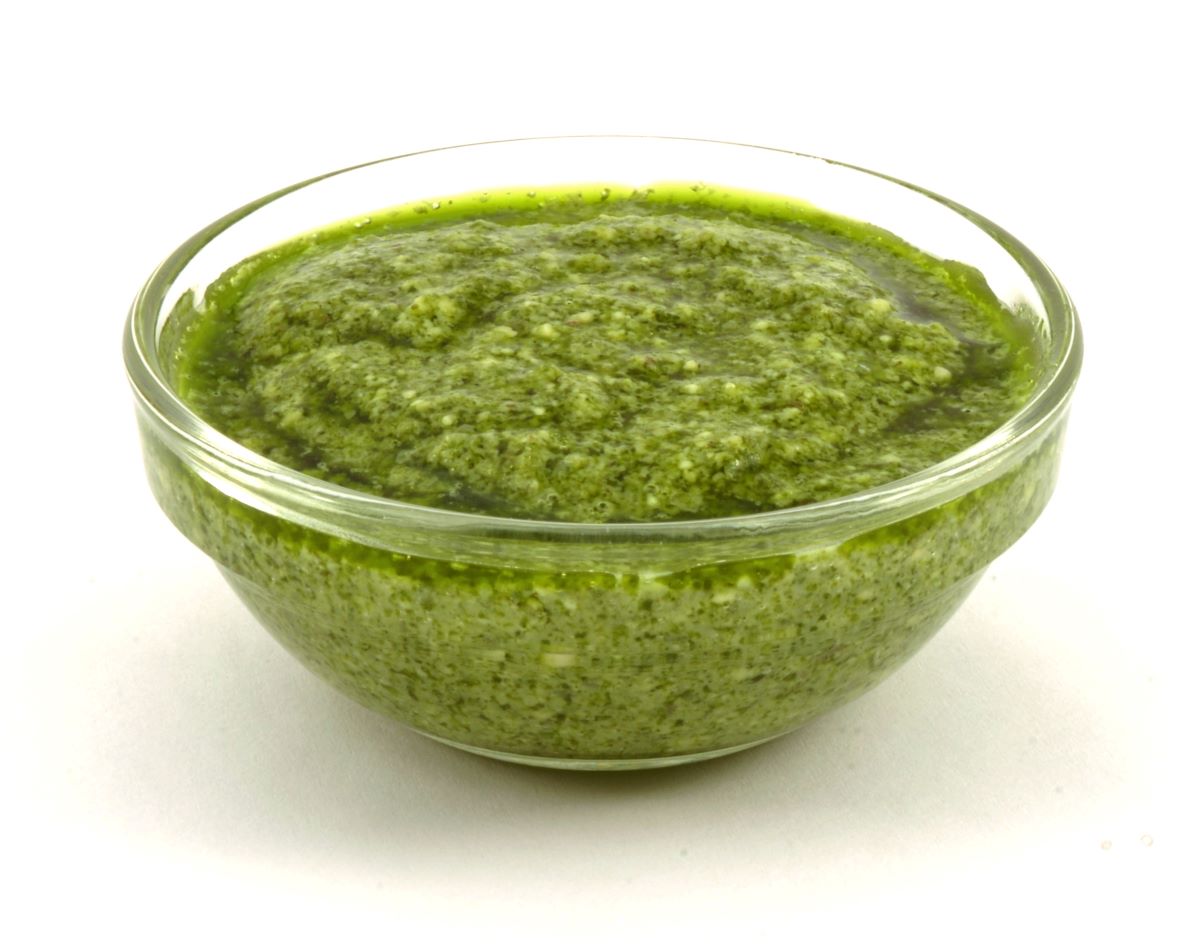

Articles
How To Store Fresh Pesto
Modified: February 28, 2024
Learn how to store fresh pesto effectively in this informative article. Preserve the vibrant flavors of your homemade pesto for longer freshness and deliciousness.
(Many of the links in this article redirect to a specific reviewed product. Your purchase of these products through affiliate links helps to generate commission for Storables.com, at no extra cost. Learn more)
Introduction
Welcome to the wonderful world of pesto! If you’re a fan of this vibrant and flavorful sauce, you’ve likely encountered the challenge of what to do with any leftover pesto. Whether you’ve made it yourself or bought a jar from the store, knowing how to properly store fresh pesto is essential to maintain its fresh taste and vibrant color.
Pesto is a versatile sauce that originates from Genoa, Italy, and typically consists of fresh basil leaves, garlic, pine nuts, Parmesan cheese, and olive oil. It’s known for its bold and herbaceous flavor, making it the perfect accompaniment to pasta, sandwiches, salads, and more.
To enjoy the full flavor and freshness of pesto, it’s important to understand how to select the right ingredients, prepare it properly, and store it correctly. In this article, we’ll guide you through the process of storing fresh pesto, whether you need to keep it for a few days or want to preserve it for long-term use.
So, let’s dive in and explore the best ways to store your delicious batch of homemade or store-bought pesto to ensure that it stays fresh and delightful for as long as possible.
Key Takeaways:
- Store fresh pesto in the refrigerator for up to 5 days by transferring it to an airtight container, smoothing the surface, adding a layer of olive oil, and labeling the container with the date.
- Freeze pesto for long-term storage by portioning it, transferring to freezer-safe containers, labeling and dating, and storing for up to 3 months. Thaw gradually in the refrigerator before use.
Read more: How To Store Pesto
Understanding Pesto
Before we delve into the topic of storing fresh pesto, let’s take a moment to understand this delectable sauce. Pesto, derived from the Italian word “pestare” meaning to crush or pound, is a versatile sauce that adds a burst of flavor to a variety of dishes.
The traditional basil-based pesto consists of fresh basil leaves, garlic, pine nuts, Parmesan cheese, and olive oil. However, there are also variations that incorporate ingredients like spinach, arugula, sun-dried tomatoes, or even walnuts instead of pine nuts. The ingredients are typically blended together to create a smooth, creamy, and aromatic sauce.
Pesto’s vibrant green color and intense flavor come from the fresh basil leaves. Basil, known for its sweet and slightly peppery taste, brings a unique freshness to pesto and complements other ingredients perfectly. The garlic adds a robust and slightly pungent flavor, while the pine nuts provide a delicate nuttiness.
When it comes to using pesto, the possibilities are endless. It can be tossed with pasta, spread on sandwiches or wraps, drizzled over grilled vegetables, or used as a dip for bread. Pesto can also be used as a marinade for proteins like chicken or fish or as a topping for pizzas or bruschetta.
Now that we have a better understanding of what pesto is and how it can be used, let’s explore the best practices for selecting and preparing the freshest ingredients to make your pesto shine.
Tips for Selecting Fresh Ingredients
When it comes to making the best pesto, using fresh and high-quality ingredients is key. Each component contributes to the overall flavor and aroma of the sauce. Here are some tips for selecting the best ingredients for your pesto:
- Basil: Look for fresh basil leaves that are vibrant green in color, with no signs of wilt or discoloration. The leaves should be fragrant and free from yellowing or brown spots.
- Garlic: Opt for firm and plump garlic cloves. Avoid cloves that have started to sprout or have developed a greenish hue, as this indicates that they may be past their prime.
- Pine Nuts: Choose pine nuts that have a pale cream color and are uniform in size. They should have a slight sweet aroma and taste. Avoid nuts that appear discolored or have a rancid smell.
- Parmesan Cheese: Use freshly grated Parmesan cheese for the best flavor. Look for a wedge of Parmesan and grate it yourself to ensure optimal freshness. Avoid pre-grated cheese, as it may contain additives that can affect the taste and texture of the pesto.
- Olive Oil: Use high-quality extra virgin olive oil to enhance the taste of your pesto. Look for oils that are fruity, aromatic, and have a vibrant golden-green color. Avoid oils that have a rancid or dull flavor.
Remember, the quality of your ingredients will greatly impact the final taste of your pesto. It’s worth investing in the best ingredients you can find to ensure a truly delicious sauce.
Now that you have a good understanding of how to select fresh ingredients, let’s move on to the next step: preparing the pesto itself.
Preparing the Pesto
Now that you have gathered your fresh ingredients, it’s time to prepare the pesto. Follow these steps to create a delicious and aromatic sauce:
- Wash and dry the basil: Start by washing the basil leaves gently under cold running water to remove any dirt or impurities. Pat them dry with a clean kitchen towel or paper towels. It’s important to ensure that the basil leaves are completely dry before using them to prevent the pesto from becoming watery.
- Crush the garlic: Peel the garlic cloves and crush them using a garlic press or finely mince them with a sharp knife. Alternatively, you can use a mortar and pestle to crush the garlic to a paste-like consistency, adding a traditional touch to the preparation process.
- Toast the pine nuts: Place the pine nuts in a dry skillet over medium heat. Toast them for a few minutes, stirring occasionally, until they turn golden brown and release a nutty aroma. Be careful not to burn them, as they can quickly go from toasted to charred.
- Combine the ingredients: In a food processor or blender, add the basil leaves, crushed garlic, toasted pine nuts, and grated Parmesan cheese. Pulse or blend the ingredients until they are coarsely chopped and well combined.
- Stream in the olive oil: With the processor or blender running, slowly stream in the extra virgin olive oil. Continue blending until the ingredients are fully incorporated and the pesto reaches a smooth and creamy consistency. You may need to scrape down the sides of the container with a spatula to ensure everything is well mixed.
- Season to taste: Give the pesto a taste and add salt and pepper as needed. Remember that the Parmesan cheese already contributes some saltiness, so be mindful when seasoning.
Once your pesto is prepared, you can proceed to store it using the methods we’ll discuss next.
Now that you know how to make a delicious batch of pesto, let’s explore the best ways to store it to maintain its freshness and flavor.
Storing Pesto in the Refrigerator
If you plan on using your pesto within a few days, storing it in the refrigerator is the best option. Follow these steps to ensure your pesto stays fresh:
- Transfer to an airtight container: Once your pesto is prepared, transfer it to a clean and dry airtight container. Glass jars or plastic containers with tight-fitting lids are ideal for preserving the flavor and preventing any external odors or moisture from affecting the sauce.
- Smooth the surface: To prevent the top layer of your pesto from oxidizing and turning brown, smooth the surface of the sauce with a spoon or spatula. This helps create a barrier against air exposure.
- Add a layer of olive oil: Drizzle a thin layer of olive oil over the surface of the pesto. This further helps to protect it from oxidation and maintain its vibrant color.
- Seal and refrigerate: Securely close the lid of the container and place it in the refrigerator. Your pesto can be stored in the refrigerator for up to 5 days.
Remember to label your container with the date to keep track of its freshness. When ready to use, simply remove the desired amount of pesto from the refrigerator and close the container promptly to minimize air exposure.
Now that you know how to store pesto in the refrigerator, let’s explore how to freeze it for longer-term storage.
Store fresh pesto in an airtight container, covering the surface with a thin layer of olive oil to prevent oxidation. Keep it refrigerated and use within 5-7 days for best flavor.
Read more: How To Store Basil Pesto
Freezing Pesto for Long-Term Storage
If you have a large batch of pesto or want to preserve it for an extended period, freezing is the best method. Freezing pesto helps retain its freshness and flavor, allowing you to enjoy it even months down the line. Follow these steps to freeze your pesto:
- Portion the pesto: Divide the pesto into small portions that you would typically use in a single serving. This will make it easier to thaw and use as needed without having to defrost the entire batch.
- Transfer to freezer-safe containers: Place each portion of pesto into individual freezer-safe containers or small resealable bags. Make sure to remove any excess air from the bags before sealing them tightly. Alternatively, you can use ice cube trays for smaller portions (more on that later).
- Label and date: Label each container or bag with the contents and the date of freezing. This will help you keep track of the freshness and ensure proper rotation of your pesto supply.
- Freeze: Place the containers or bags of pesto in the freezer, making sure they are arranged in a flat and even layer to allow for easier stacking and organization.
Frozen pesto can typically be stored for up to 3 months without losing its flavor and quality. However, for best results, try to use it within 1 to 2 months.
Now that your pesto is safely stored in the freezer, let’s learn how to thaw and use it effectively.
Thawing and Using Frozen Pesto
When you’re ready to use your frozen pesto, thawing it properly is crucial to maintain its taste and texture. Here’s how you can thaw and utilize your frozen pesto:
- Thaw in the refrigerator: The best way to thaw frozen pesto is to transfer it from the freezer to the refrigerator and let it thaw slowly. This gradual thawing process prevents the sauce from becoming watery or losing its flavor. Plan ahead and allow the pesto to thaw in the refrigerator overnight or for approximately 24 hours.
- Stir before using: Once the pesto is fully thawed, give it a gentle stir to recombine any separated oil or ingredients. This will ensure an even distribution of flavors and consistency.
- Check the consistency: Thawed pesto may be slightly thicker due to the cold temperature. If needed, you can add a small amount of olive oil to achieve your desired consistency.
- Use and enjoy: Thawed pesto can be used in various dishes just like fresh pesto. Toss it with cooked pasta, spread it on sandwiches, drizzle it over roasted vegetables, or incorporate it into your favorite recipes for added flavor.
Remember, once thawed, it’s important to use the pesto within a few days to maintain its freshness. Avoid refreezing previously frozen pesto, as this can affect both the taste and quality of the sauce.
Now that you know how to thaw and use your frozen pesto, let’s explore an alternative method of storing pesto: using ice cube trays.
Storing Pesto in Ice Cube Trays
An alternative and convenient method for storing pesto is by using ice cube trays. This method allows you to portion and freeze small amounts of pesto for quick and easy use. Here’s how you can store pesto in ice cube trays:
- Prepare the pesto: Follow the steps mentioned earlier to prepare your pesto. Make sure it’s well mixed and ready for freezing.
- Spoon into ice cube trays: Spoon small amounts of pesto into each section of the ice cube tray. Fill each section about 3/4 full, leaving a little room for expansion as the pesto freezes.
- Smooth the surface: Use the back of a spoon or spatula to smooth the surface of each pesto-filled section. This helps create a flat top, making it easier to stack and store the frozen pesto cubes.
- Freeze: Place the ice cube tray in the freezer and allow the pesto to freeze completely. This usually takes a few hours.
- Pop out the cubes: Once the pesto has frozen solid, remove the ice cube tray from the freezer. Gently push on the bottom of each section to release the pesto cubes. Transfer the frozen cubes to a labeled and resealable freezer bag.
- Store: Place the bag of pesto cubes back in the freezer for long-term storage. Note the date of freezing on the bag for reference.
Using frozen pesto cubes is incredibly convenient. You can easily defrost and use one or two cubes at a time, depending on your needs. This method also allows you to portion the pesto accurately, minimizing waste.
Now that you’re familiar with storing pesto using ice cube trays, let’s explore some additional tips and ideas to help you make the most of your pesto.
Additional Tips and Ideas
Here are some additional tips and ideas to help you make the most out of your pesto:
- Layer pesto in jars with olive oil: To store a larger quantity of pesto in jars, you can create layers by adding a thin layer of pesto, followed by a drizzle of olive oil, and then repeating until the jar is filled. This creates a seal and helps preserve the freshness of the pesto.
- Experiment with different herbs and nuts: While classic pesto is made with basil and pine nuts, don’t be afraid to experiment with other herbs like cilantro, parsley, or mint. Likewise, you can try using different nuts such as almonds, cashews, or pistachios for a unique twist.
- Add pesto into other recipes: Pesto is incredibly versatile and can enhance the flavor of many dishes. Use it as a base for salad dressings, as a sauce for grilled meats or fish, or even as a topping for homemade pizza.
- Make a pesto butter: Mix softened butter with pesto to create a delicious pesto butter. Spread it on bread, melt it over grilled corn on the cob, or use it to season steaks or roasted vegetables.
- Label and date everything: Proper labeling is essential when storing pesto in different containers or using different methods. It helps you keep track of its freshness and ensures you use the oldest ones first.
- Be creative with freezing portions: If you have specific portion sizes in mind, you can freeze pesto in small silicone molds or even in ice cube bags. This way, you can easily grab a portion for a single serving without having to thaw the entire batch.
- Optimize pesto taste when using frozen basil: If you’re using frozen basil as an ingredient in your pesto, blanch the leaves in boiling water for a few seconds before freezing. This helps retain their color and flavor.
- Use pesto as a marinade: Coat chicken, fish, or shrimp with pesto and let it marinate for a few hours before cooking. This imparts a delicious flavor to the protein and adds a vibrant touch to your meals.
Remember, pesto is a versatile sauce that can elevate any dish with its vibrant flavors. Get creative and explore different ways to incorporate pesto into your favorite recipes.
Now that you have a wealth of knowledge on storing, thawing, and using pesto, you can confidently enjoy your flavorful batch of pesto without waste. So go ahead, whip up a fresh batch of pesto, and discover the endless possibilities this delicious sauce has to offer!
Happy cooking and bon appétit!
Read more: How To Store Homemade Pesto
Conclusion
Congratulations! You are now equipped with the knowledge and tips to store, freeze, thaw, and use pesto effectively. By following these guidelines, you can ensure that your homemade or store-bought pesto stays fresh, flavorful, and ready to elevate your culinary creations.
Remember to select the freshest ingredients for your pesto, whether it’s vibrant basil leaves, aromatic garlic, crunchy pine nuts, flavorful Parmesan cheese, or high-quality olive oil. Preparing the pesto involves crushing garlic, toasting pine nuts, and blending all the ingredients into a smooth and creamy sauce.
For short-term storage, transfer your pesto to an airtight container, smoothing the surface and adding a thin layer of olive oil to preserve its vibrant color. Store it in the refrigerator for up to five days. For long-term storage, portion the pesto into containers or ice cube trays, freeze it, and use it within three months for optimal flavor.
When thawing frozen pesto, do it gradually in the refrigerator, ensuring to stir and check the consistency before use. Consider portioning your pesto into ice cube trays for ease of use and to prevent waste.
Don’t be afraid to experiment with different herbs, nuts, and uses for pesto. Create layered pesto jars with olive oil, make pesto butter, incorporate pesto into other recipes, and label and date everything for proper rotation.
With these additional tips and ideas, you can unleash your creativity in the kitchen and enjoy the delightful flavors of pesto in a variety of dishes.
So, next time you find yourself with a surplus of fresh pesto or a store-bought jar, you won’t have to worry about it going to waste. Instead, you can confidently store it, freeze it, thaw it, and use it in a way that suits your needs.
Now, it’s time to grab your ingredients, prepare a fresh batch of pesto, and let your culinary adventures begin. Happy cooking!
Frequently Asked Questions about How To Store Fresh Pesto
Was this page helpful?
At Storables.com, we guarantee accurate and reliable information. Our content, validated by Expert Board Contributors, is crafted following stringent Editorial Policies. We're committed to providing you with well-researched, expert-backed insights for all your informational needs.
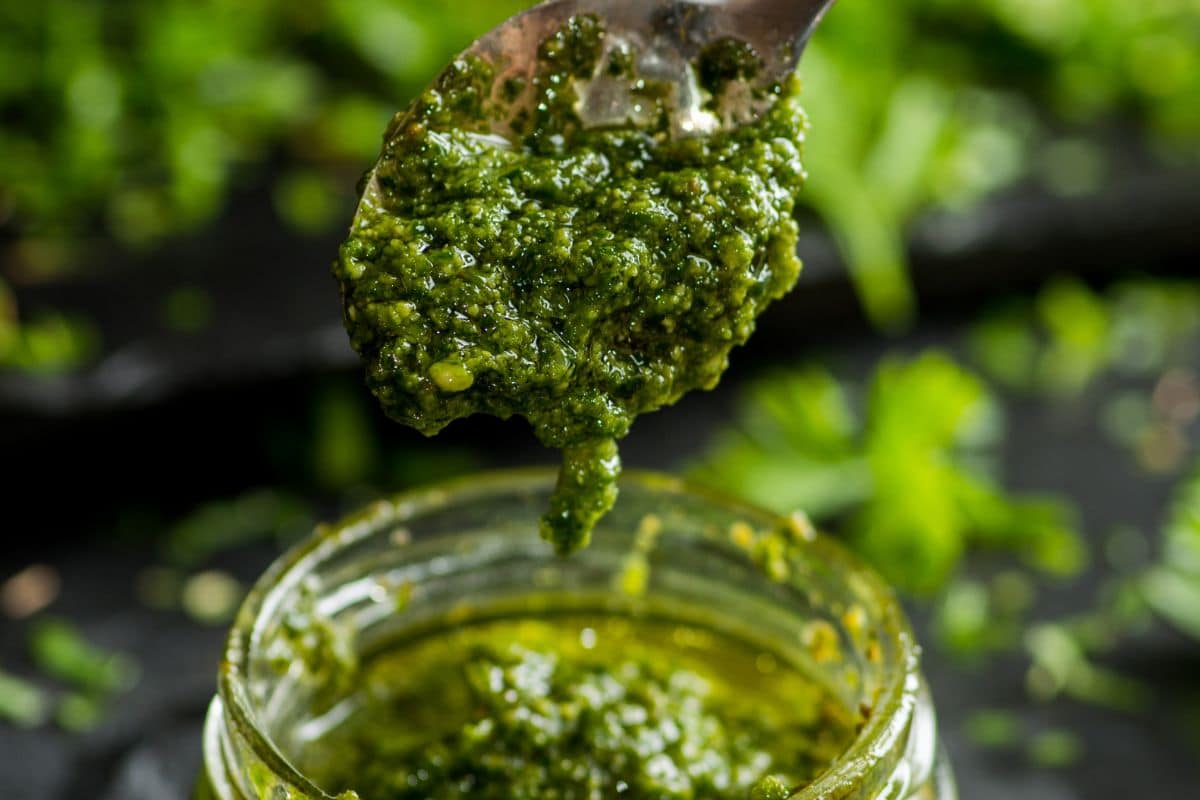
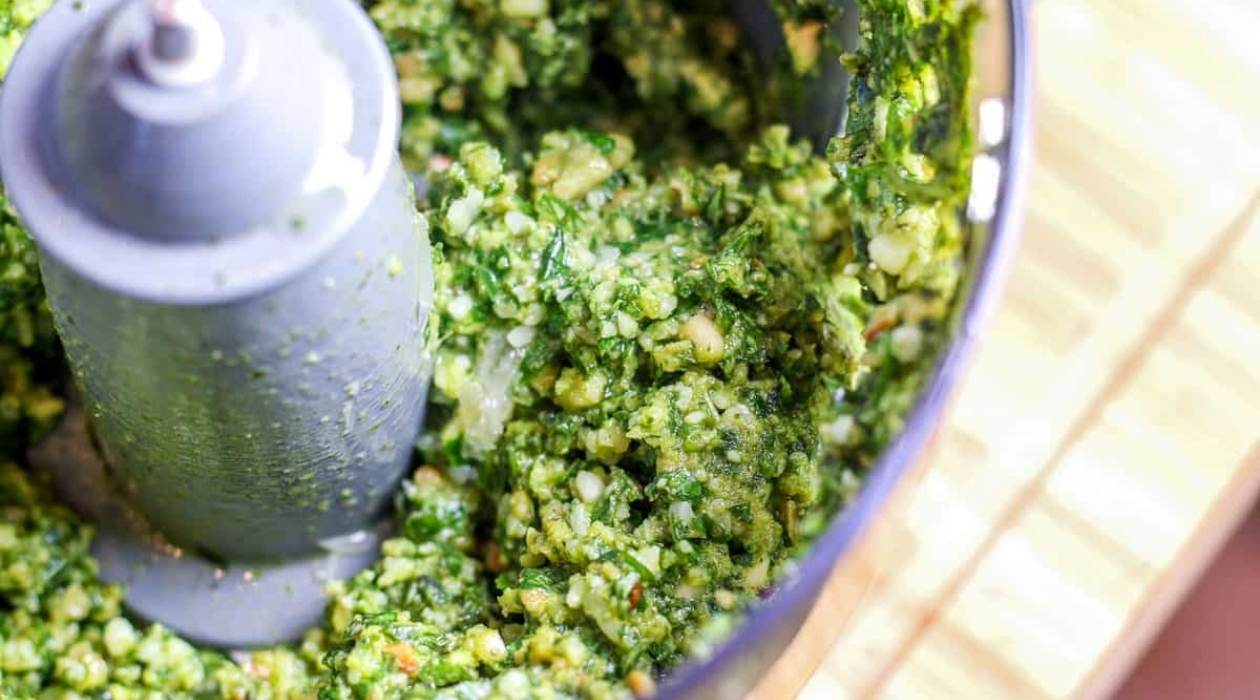
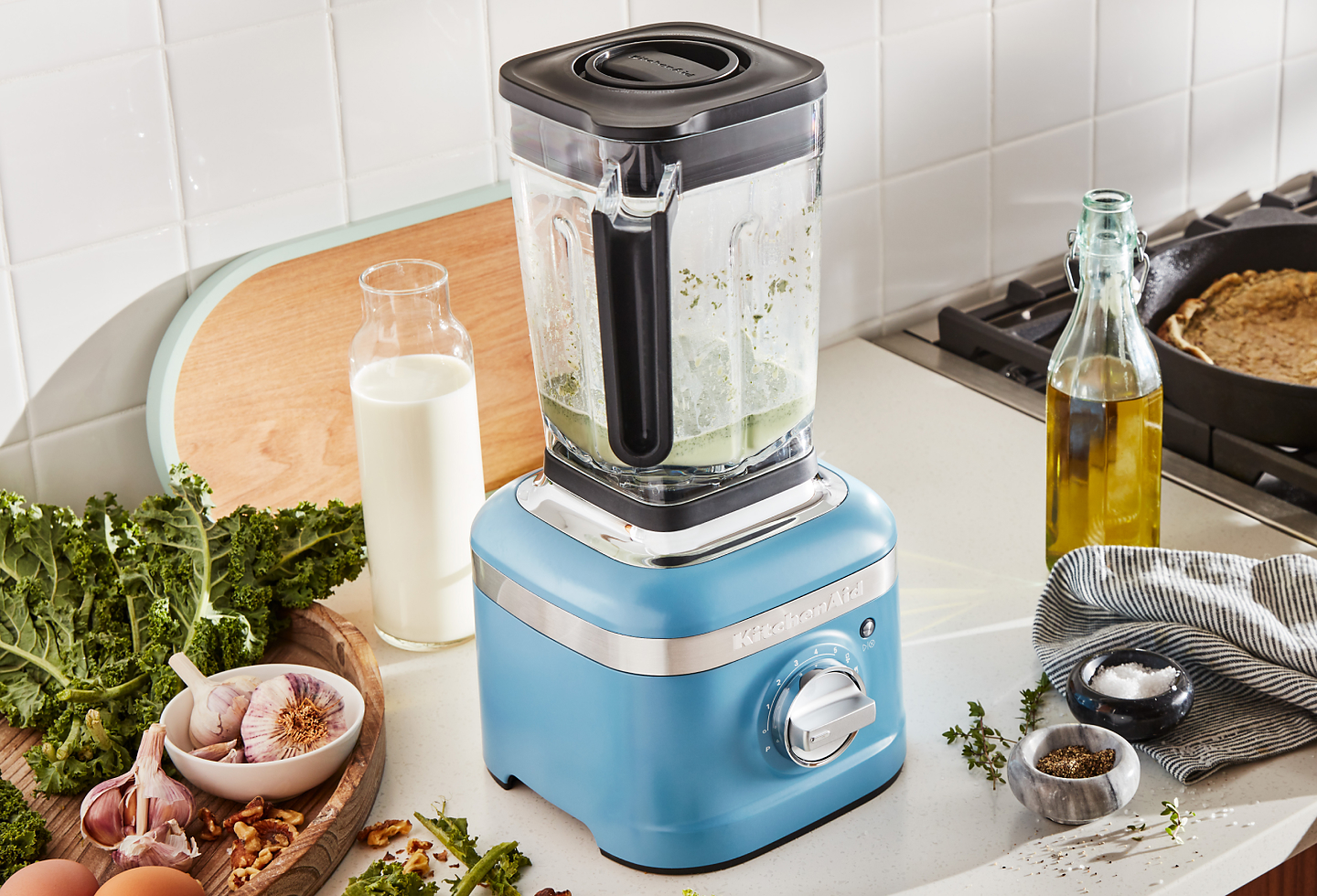
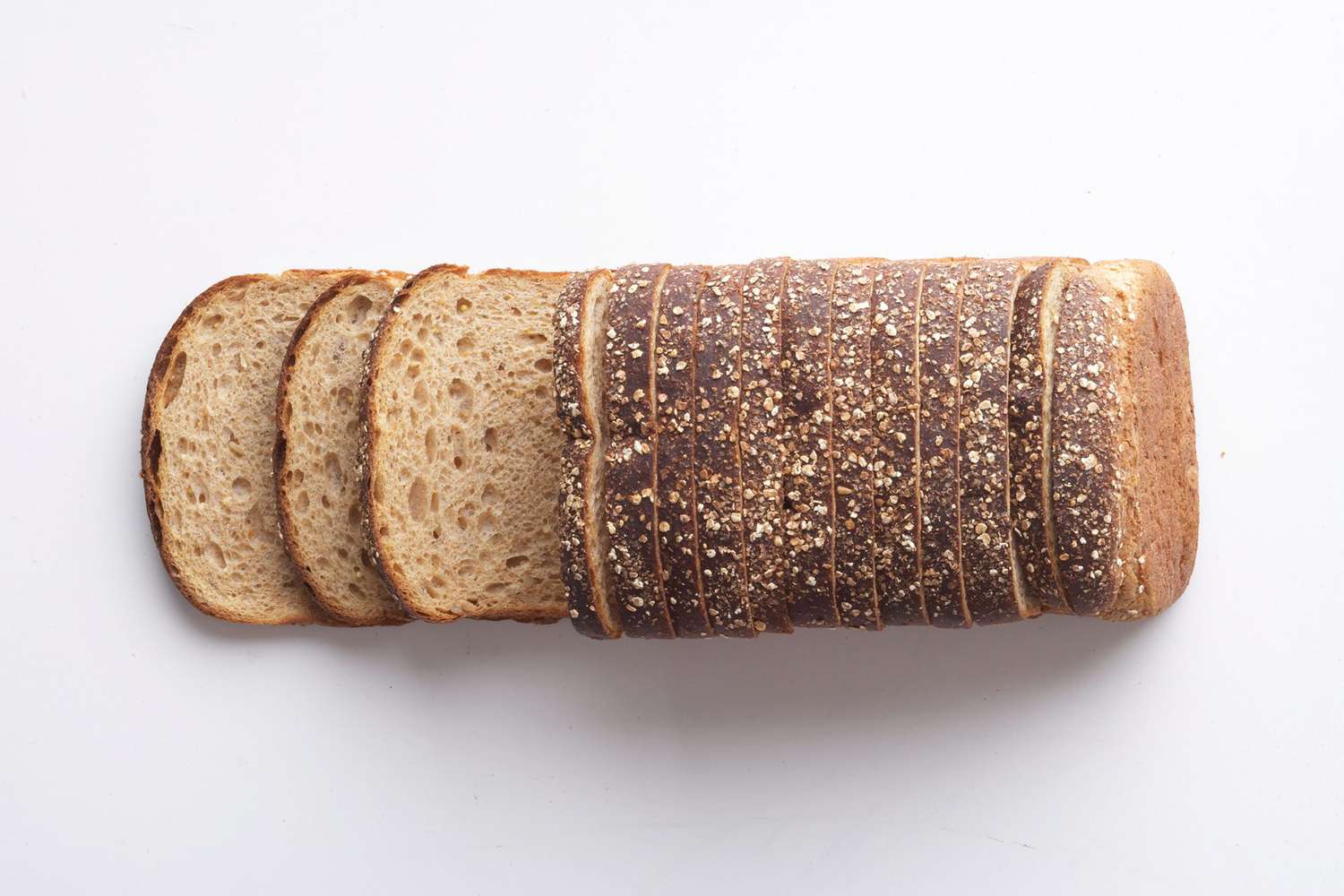
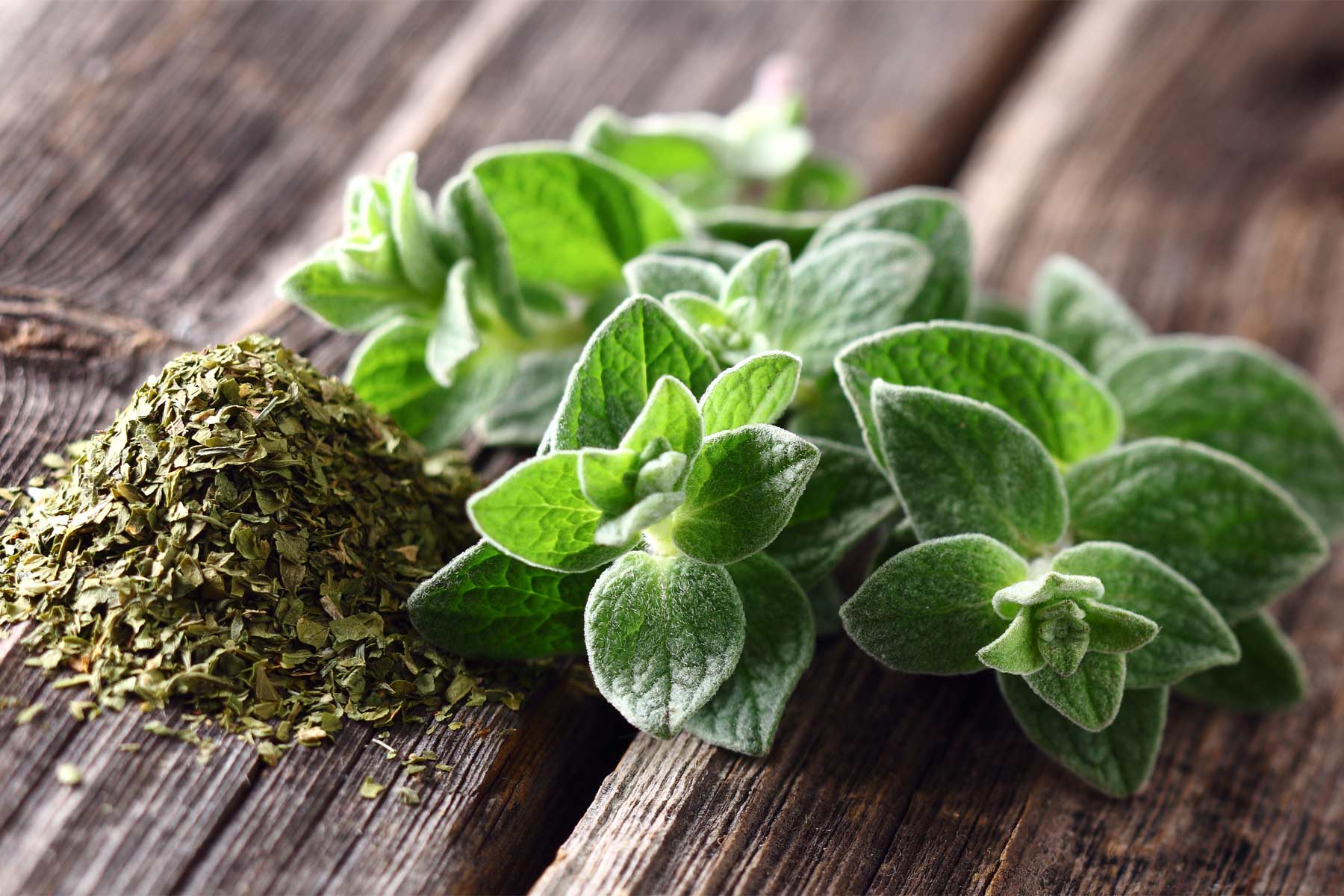

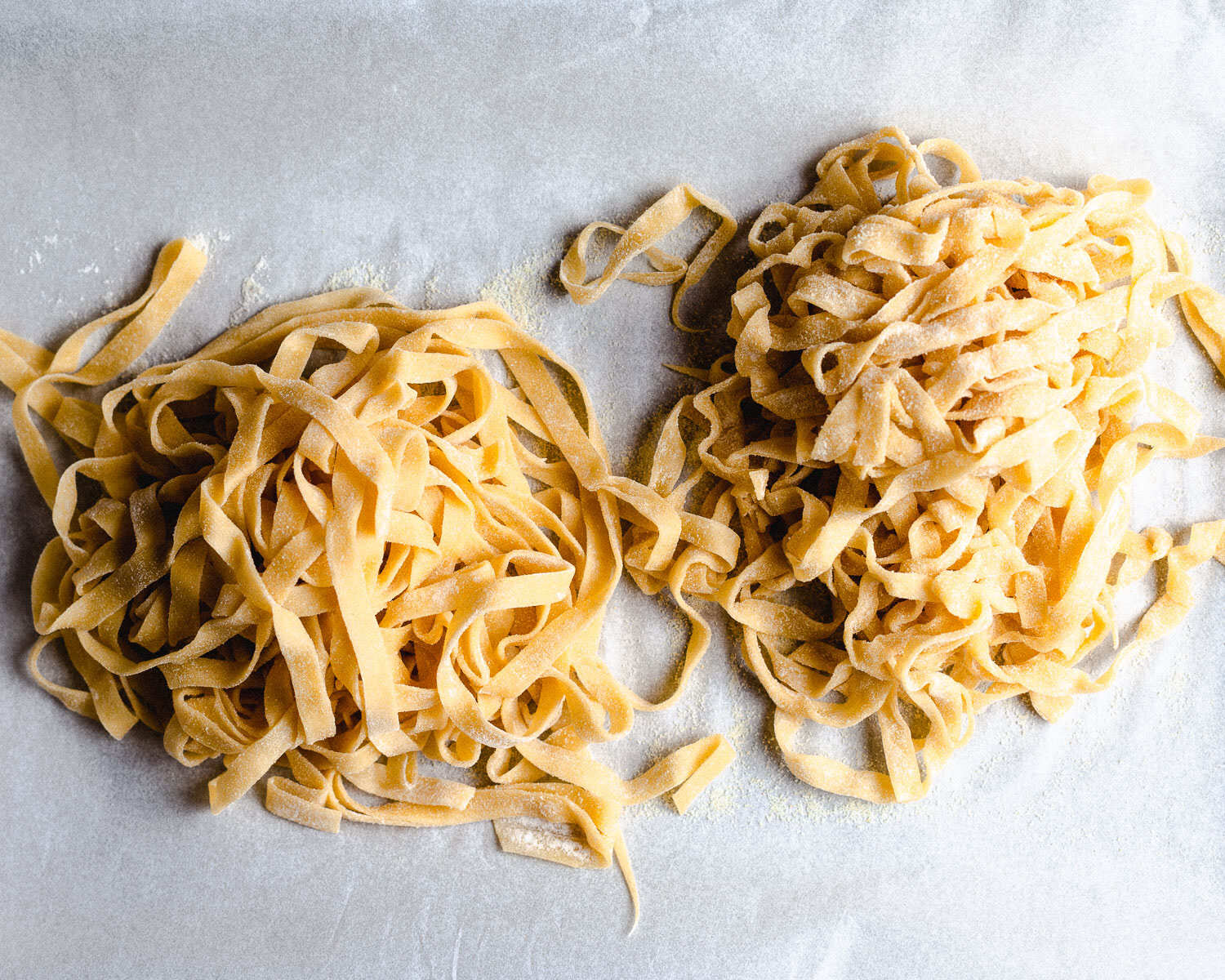

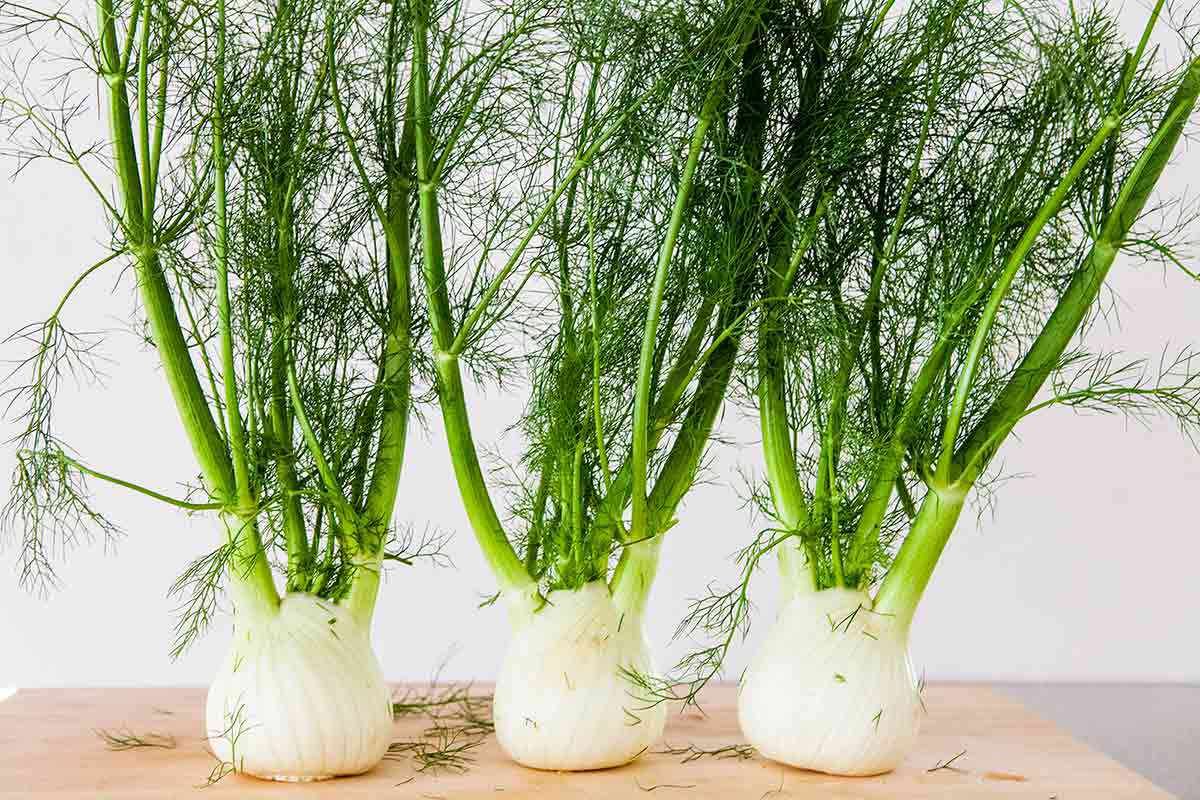
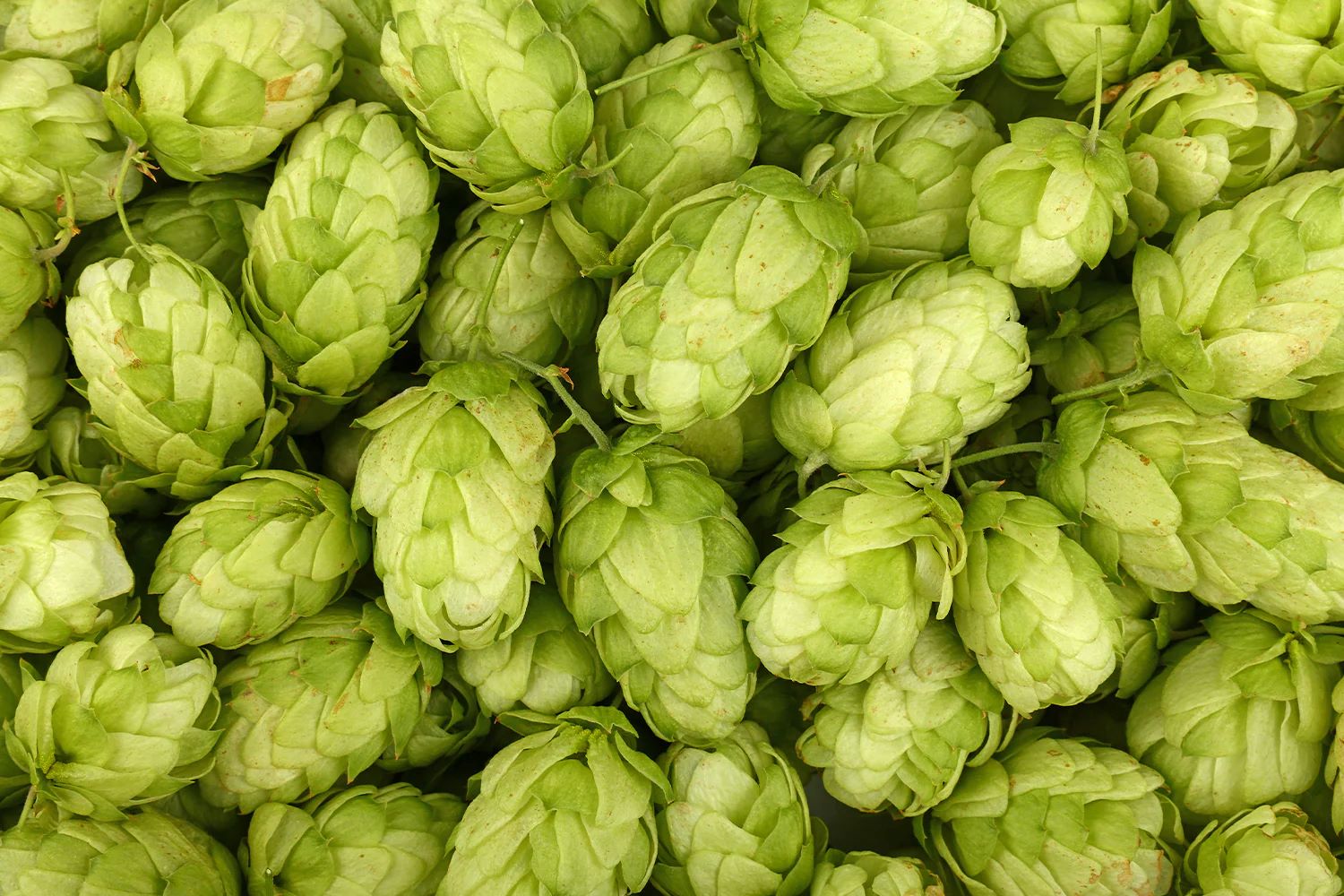
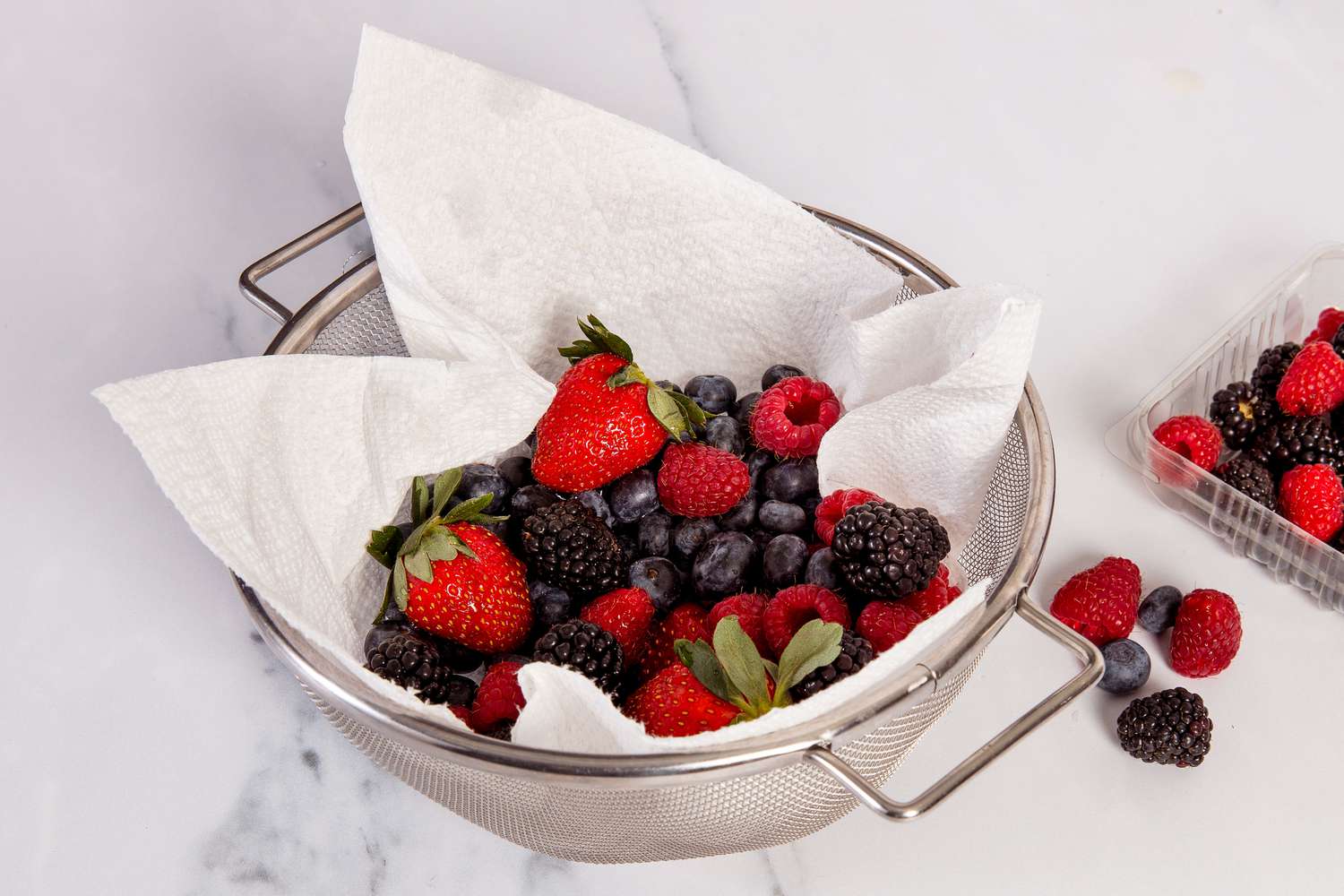
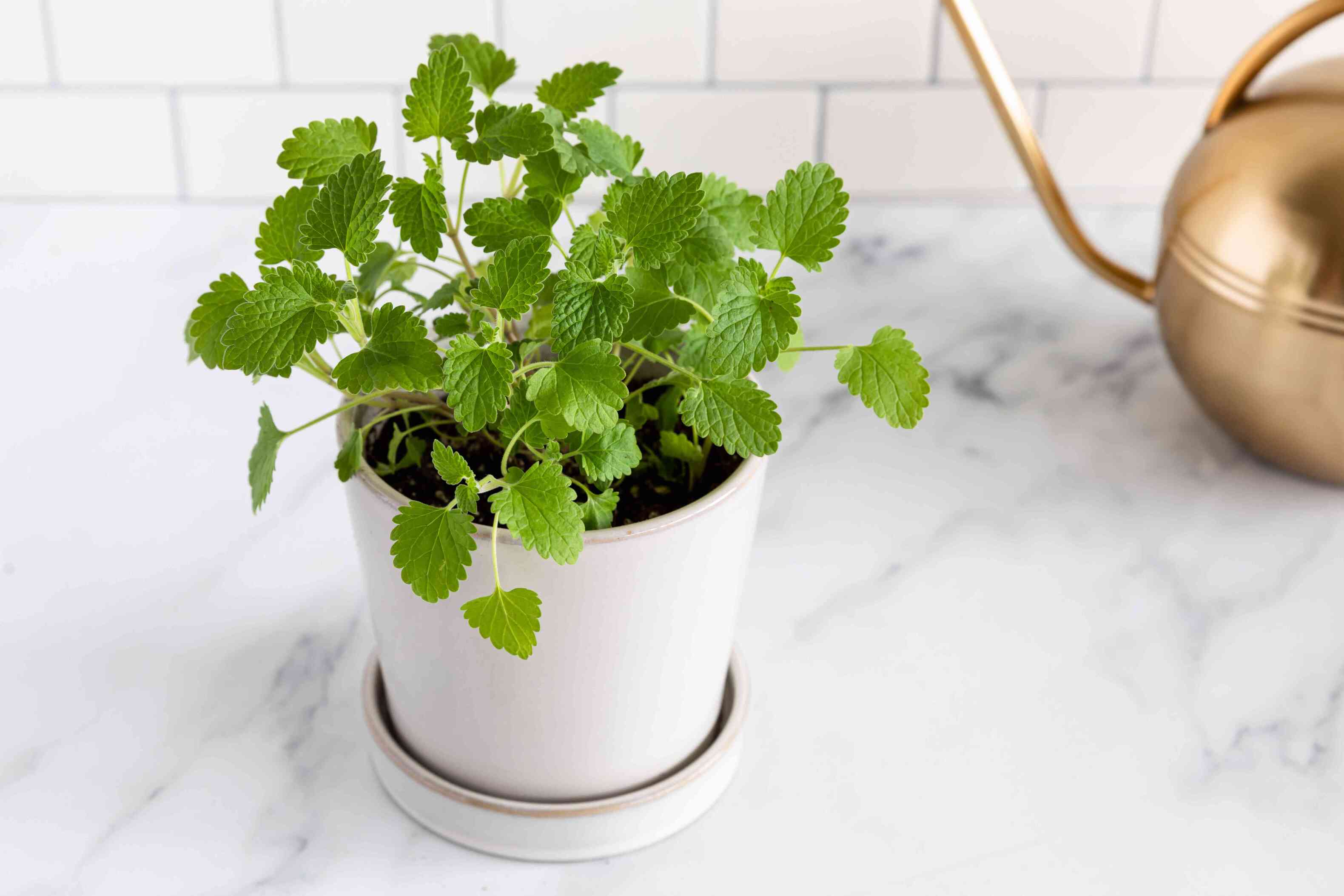
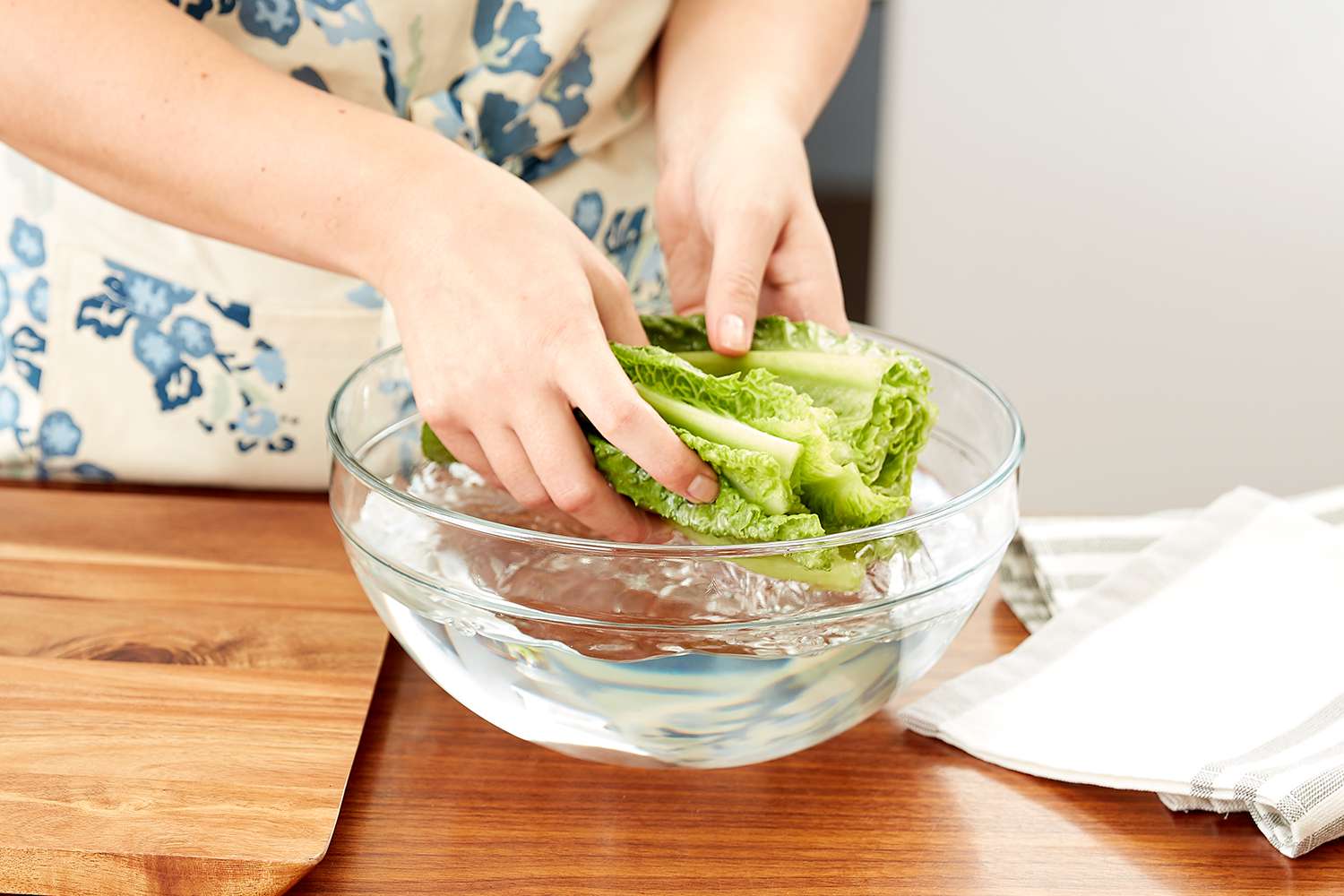

0 thoughts on “How To Store Fresh Pesto”